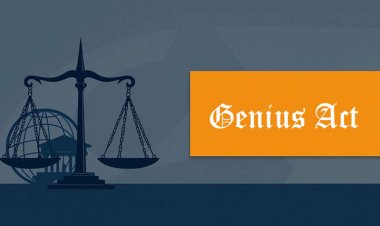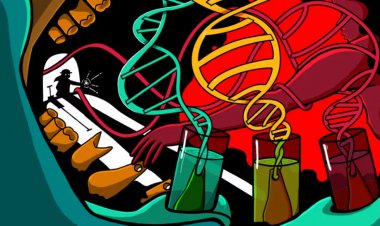The Technology Behind AI Medical Scribes: NLP, Machine Learning & Voice AI
AI medical scribes use NLP, machine learning, and voice AI to automate clinical note-taking during patient visits. They transcribe in real time, organize notes intelligently, integrate with EHRs, and adapt to each doctor's style—saving time and improving accuracy in medical documentation.

Have you ever considered how doctors keep their paperwork under control? No one has to tell you that all those clinical notes and documentation build up quickly and can cause doctors to spend time on recordkeeping instead of caring for patients. That’s where AI medical scribes come in. Having these apps around helps take some of the work out of making notes during medical appointments. After all, what exactly makes them interesting? Let’s find out the technology behind these advancements: NLP, machine learning, and voice recognition.
What Are AI Medical Scribes?
In simple terms, AI medical scribes are like digital assistants that listen during patient visits and create clinical notes automatically. Think about having a scribe by your side, taking notes as you are with your patients, so you don’t have to worry about typing. Isn’t that appealing? That is why a lot of doctors rely on AI medical scribe software to handle their paperwork quickly and correctly.
What’s the Point behind NLP?
Instead of manually reading what is said, NLP is the technology that allows the scribe to understand the conversation. NLP doesn’t merely set down words; it recognises medical terms, symptoms, and treatments and sorts the information neatly as AI clinical notes.
Imagine telling your assistant how to recognize and follow medical language, so it can understand what’s said. That’s why NLP is a key player in the world of ai scribe medical.
The Amazing Features Medical Scribe AI Software Offer
When it comes to picking the right AI medical scribes, knowing what features really make a difference is key. We’ll list some of the main features that make these tools invaluable for doctors.
Real-Time Transcription
One of the standout features is real-time transcription. This means the scribe listens and types out notes as you speak, right during your patient consultations. No waiting around, no catching up later. It’s like having a personal assistant who never misses a word, helping you keep the flow with your patient without any interruptions.
Intelligent Note Organisation
It’s not just about dumping words on a page. The best medical scribe AI software organises those notes smartly, categorising symptoms, diagnoses, medications, and follow-ups neatly. This makes reviewing and editing your notes a breeze and ensures nothing important gets lost in the shuffle.
Seamless Integration
Doctors don’t want to juggle multiple systems, so smooth integration with your existing EHR software is a must. The top AI scribe medical solutions, including those from HealthOrbit AI, fit right into your current workflow. That means less hassle and more time saved.
Learning and Customisation
Every doctor’s practice is unique, and these scribes know it. Thanks to machine learning, the software adapts to your specific style and preferences over time. Correct a phrase or add a detail? It remembers for next time, making your notes more personalised and accurate as you go.
Secure and Compliant
Medical documentation is sensitive, so security is a top priority. The best tools come with strong encryption and comply with all necessary healthcare regulations, giving you peace of mind that your patient data stays safe and confidential.
User-Friendly Interface
No one wants complicated software. The top medical transcription AI app options are designed with simplicity in mind, easy to navigate, quick to learn, and smooth to use even during busy clinic hours.
Machine Learning: Getting Smarter Every Time
Here’s the cool part: these scribes don’t stay the same forever. Thanks to machine learning, they learn from every note they take. If you correct something, the software remembers and adjusts. Over time, it gets better at recognising your style and the specific info you need.
This means fewer mistakes and less time spent fixing notes. Plus, it speeds things up, helping doctors breeze through documentation with ease.
What Should You Expect from Medical Scribe AI Software?
If you’re considering giving a medical transcription AI app a try, you’re probably wondering what it brings to the table. Well, these apps are designed to make your life easier in more ways than one. For starters, they can capture your notes in real-time as you talk with patients, so you don’t have to worry about scribbling down everything or typing later.
On top of that, the notes are automatically organized in a way that’s easy to review and update, saving you from the hassle of messy, disorganized paperwork. Here’s what you can count on with a good medical transcription AI app:
- Real-time note-taking during patient visits, so nothing slips through the cracks
- Notes that are organised clearly and easy to tweak whenever needed
- Easy integration with your existing electronic health records system
- Continuous improvements as the system learns and adapts to your style
- A dependable assistant who’s always attentive and never misses a beat
Final Thoughts
The tech behind AI medical scribes is pretty impressive: NLP, machine learning, and voice recognition all work together to make doctors’ lives easier. These tools help speed up documentation, reduce errors, and free up more time for patient care.
At HealthOrbit AI, we’re proud to offer some of the best medical scribe AI software out there, designed with real doctors in mind. Interested in making your paperwork less painful? Check out HealthOrbit AI and see how these smart scribes can transform your practice.






















